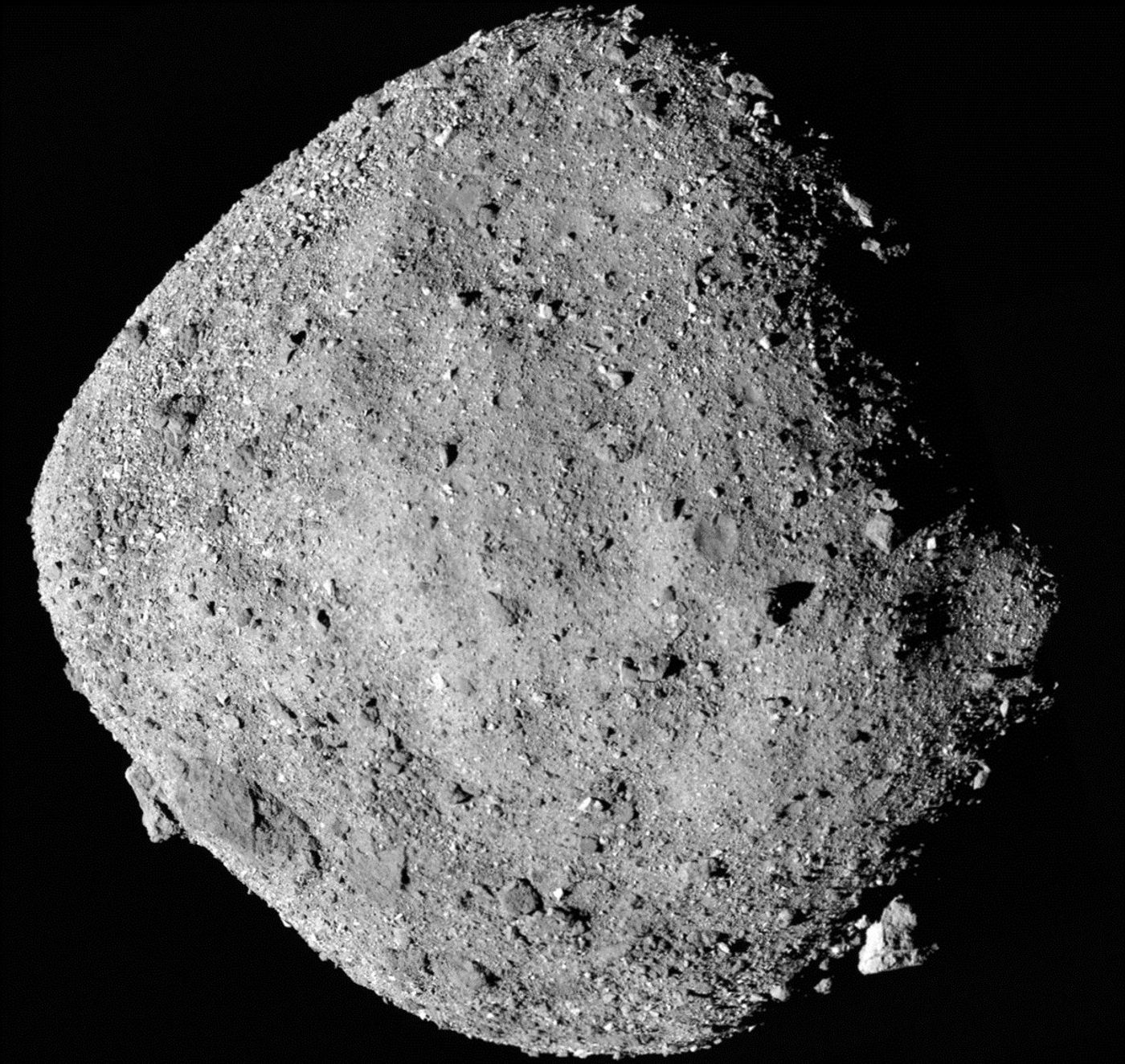Bennu is a Moist and Rocky World, OSIRIS-REx Finds
After a two-year journey through space, NASA’s Origins, Spectral Interpretation, Resource Identification, Security-Regolith Explorer (OSIRIS-REx) mission safely pulled up at its destination last week: a world known to astronomers as 101955 Bennu (or just Bennu for short).
Although OSIRIS-REx just recently arrived at Bennu, the spacecraft has been observing the world’s surface throughout its approach from August until now. These ground-based observations provided astronomers with novel insights regarding Bennu’s surface features, and as it would seem, the asteroid is somewhat moist and much rockier than anticipated.
Image Credit: NASA/Goddard/University of Arizona
Scientists reached this conclusion after analyzing data collected by two of the spacecraft’s spectrometers: the OSIRIS-REx Visible and Infrared Spectrometer (OVIRS) and the OSIRIS-REx Thermal Emissions Spectrometer (OTES). These instruments can detect hydroxyls, which are mainly just molecules of hydrogen and oxygen.
Scientists for the OSIRIS-REx mission say these hydroxyls are contained within water-bearing clay minerals and that they exist all over Bennu’s surface on a global scale rather than being limited to a specific region. That said, the rocks found throughout Bennu’s surface must have interacted with water in the past.
But where would such water have come from? No one knows for sure as of this writing, so all we can do is speculate. Scientists believe Bennu is too small to host liquid water, but it’s possible that perhaps its parental body once hosted it.
"This finding may provide an important link between what we think happened in space with asteroids like Bennu and what we see in the meteorites that scientists study in the lab," explained Ellen Howell, a spectral analyst with the OSIRIS-REx mission.
"It is very exciting to see these hydrated minerals distributed across Bennu's surface, because it suggests they are an intrinsic part of Bennu's composition, not just sprinkled on its surface by an impactor."
Related: OSIRIS-REx snaps its first picture of Bennu from afar
Other instruments on the OSIRIS-REx spacecraft, including its camera suite and radar systems, found that Bennu’s physical attributes like shape, diameter, and rotation are all consistent with early scientific predictions. That said, the mission is not only validating theoretical information but also revealing Bennu’s surprising secrets.
Above: A video depicting early renders of Bennu's shape and physical features.
"Our initial data show that the team picked the right asteroid as the target of the OSIRIS-REx mission. We have not discovered any insurmountable issues at Bennu so far," added OSIRIS-REx principal investigator Dante Lauretta. "The spacecraft is healthy, and the science instruments are working better than required. It is time now for our adventure to begin."
Related: Hayabusa2 scientists prepare to collect asteroid samples and return them to Earth
OSIRIS-REx is just getting started, so it should be interesting to see what future observations bring. Fortunately, these are the types of things NASA likes to share with the public, and a little patience will go a long way.
Source: University of Arizona









